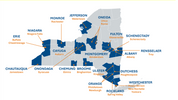5/5/2020 This Post Is Updated. Please See Post of May 5, 2020.
Balancing the safety of high risk citizens who live in nursing homes, and their staff, with the needs of a fellow resident who may contract COVID-19, has become a big challenge in New York. The Governor has attempted to balance the needs by wielding at residential facilities both a sword and a shield.
Residential health facilities for senior citizens are known hot spots for the novel coronavirus around the country and in New York. The disease appears to spread very easily from staff or a visitor or a resident, to scores of others living and working within its walls.
The issue is that residents infected with COVID-19 may not be sick enough to be transferred to a hospital. If they are hospitalized, they may be released before they test negative. What are their rights to be allowed back in their homes, located within these long term facilities? What are the rights of their fellow residents and the staff? How to balance them all?
New York has issued executive orders, directives, and advisories aimed at these facilities in recent weeks, that can be read to be at odds with each other. Taken together, the internal contradictions in the state mandates have created fear and panic in the community, and confusion and a scramble among facility operators.
First, they required nursing homes to provide PPE (personal protective equipment) even in the face of known shortages, and to perform temperature checks on staff. Next, they were required to isolate COVID-19 positive residents in quarantine. To do this, they were then directed to separate their staff into those treating COVID-19 presidents and those that did not. Then, the tide turned toward protecting the other residents. Facilities were advised to transfer COVID-19 positive residents within a facility either to another long-term care facility, or to another non-certified location, and on March 13, 2020, were allowed to have a COVID-19 positive resident only if the facility has the ability to provide adequate level of care under DOH and CDC guidelines. Most recently, state residential facilities have been ordered to promptly notify all residents and their family members within 24 hours if any resident tests positive for COVID-19 in the facility, or if any resident suffers a COVID related death.
Better news about the pandemic in general was announced in the meantime. By early April, it was clear that social distancing appears to have both flattened and lengthened the curve, and New York did not peak as high as was feared. Hospitals are no longer discharging COVID-19 positive patients as they had been in March, because these patients are still contagious, and as was noted anecdotally in California, for every COVID-19 positive patient they discharged too early, they could expect to receive 20 patients back.
Regionally, it was announced that some facility operators with multiple locations were re-purposing, where they could, their now-empty short term post-surgical rehab wings as designated COVID-19 convalescence wings. This announcement caused panic among the other residents and families, yet it did ease the general concern that these patients would have a safe place to recuperate.
But then, of gravest concern to New York nursing home residents, their families, and facility staff, came the order of March 25, 2020, that appeared to contradict the March 13th language and the dynamic nature of the crisis. It stated that long term residential health facilities MUST admit and readmit COVID-19 positive residents, and could not require testing of the patient to confirm they test negative before allowing them into the facility. For facilities fighting very hard to keep their buildings free of this highly contagious airborne disease, or facilities that did not consider themselves able to provide the adequate level of care required by the CDC and DOH guidelines, this seemed to flout all known medical advice and sense, as well as the previous guidance.
The Governor was asked about this at his daily press briefing on April 20, 2020, and said he not to know. He asked Health Commissioner Howard Zucker to field the question. Zucker said, "If you are positive, you should be admitted back to a nursing home.”
The concern that there would be scores of patients caught between a hospital needing to discharge them and having no place willing to take them in, was still not manifesting and did not appear to be at risk of occurring. For most of the State, it was not an issue at all. April 23, 2020, Phase 1 of the State's antibody test results were released that showed the Manhattan area had an infection rate of 21.2%, while as of today, data suggests it is approximately 25%, WNY has a rate of 7.1%, and Central and Northern regions show an infection rate of only 1.2-1.3%. During this time, facilities that did not believe they could safely accept COVID-19 patients still appeared to have a shield against exposing their people to COVID-19 in the interests of safety.
But the contradiction was handled by the State by doubling down on the public pressure placed on nursing home facilities. Governor Cuomo and Attorney General James jointly announced New York State will take a very aggressive stance with nursing homes, requiring them to immediately report to the Department of Health all their actions taken to comply with all DOH and CDC laws, regulations, directives and guidance. The announcement stated, "The DOH will inspect facilities that have not complied with these directives, including separation and isolation policies, staffing policies and inadequate personal protective equipment, and if DOH determines that the facilities failed to comply with the directives and guidance, DOH will immediately require the facility to submit an action plan. Facilities could be fined $10,000 per violation or potentially lose their operating license." They also emphasized the availability of a complaint line to report violators. There was the sword again.
In the same announcement, both offices appeared to reassure facilities by saying the State will increase the New York state professional staffing portal to expand training and technical assistance for nursing homes, and continue to provide PPE to these facilities on an emergency basis.
It remains unanswered what a facility should do if it lacks the proper physical layout, or positive internal airflow ventilation, or staffing, or doors for separate ingress and egress, or in other ways cannot safely isolate COVID-19 patients from other residents and staff. It appears they may reduce this information to a report to the State. But it also appears they may be fined and lose their licenses, which would not contribute to the solution of senior residential needs during this pandemic.
"Nursing homes may readmit COVID positive residents only if they have the ability to provide adequate level of care under DOH and CDC guidelines." -vs- "If you are positive, you should be admitted back to a nursing home.”
 unknownx500
unknownx500










